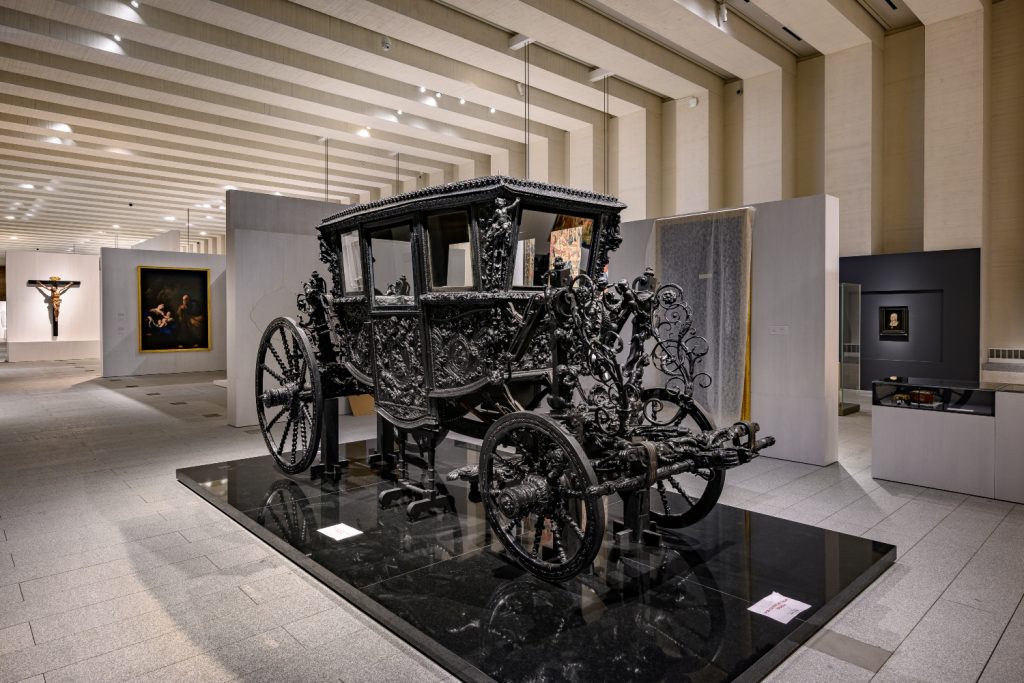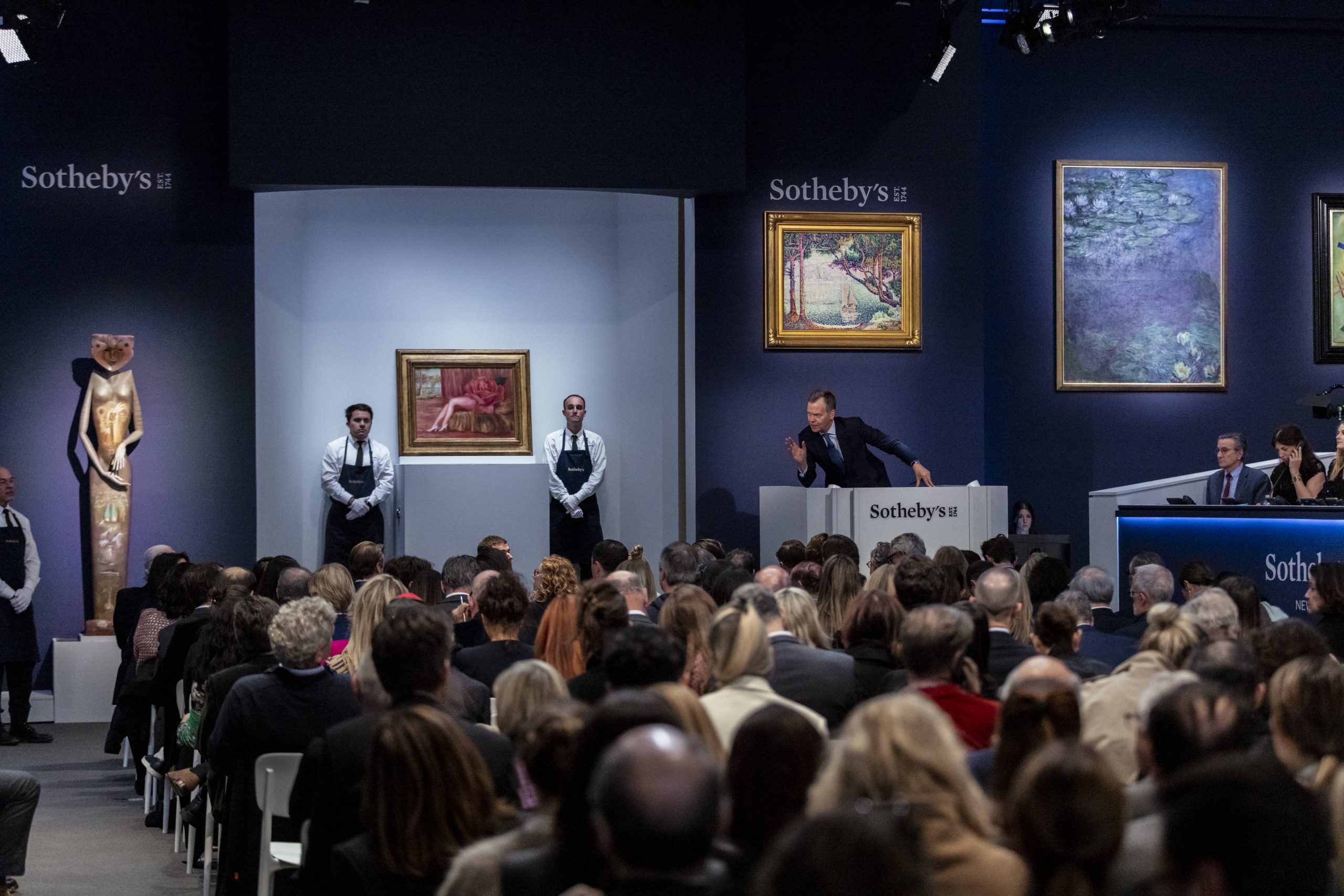The much anticipated Royal Collections Gallery in Madrid has opened to the public, boasting masterpieces by Velázquez, Caravaggio, Titian, El Greco, Tintoretto, and Goya. First conceived in the 1930s and finally initiated in 1998, the mammoth undertaking has been 25 years and €172 million ($186 million) in the making.
“This is the biggest museum project in Spain and Europe in decades,” said Ana de la Cueva, president of Spain’s Patrimonio Nacional, a government agency that oversees royal heritage.
The Room of the Habsburgs at the new Royal Collections Gallery in Madrid. Photo: Patrimonio Nacional.
The museum now houses a significant collection of more than 150,000 paintings, tapestries, pieces of furniture, decorative art, armor, and royal carriages that have been amassed by Spain’s monarchy over five centuries. The museum’s inaugural exhibition showcases 650 of these objects, a third of which will be replaced every year.

The black carriage. Photo: Patrimonio Nacional.
To reflect the collection’s history, the museum is organized chronologically into special galleries dedicated to both the Habsburg and Bourbon dynasties. For the grand opening, the museum’s temporary space has also been used to present “On The Move: National Heritage Vehicles and Carriages,” which shows visitors how people traveled in style throughout history via sumptuous royal carriages, floats, sedan chairs, and automobiles.

Caravaggio, Salome with the Head of John the Baptist (1607). Photo: Patrimonio Nacional.
Among the stars of the show are Velázquez’s White Horse (1634-38), a crucifixion by Titian, and Caravaggio’s Salome with the Head of John the Baptist (1607), one of only four works by the Italian Baroque master in Spain.

Luisa Roldán, Saint Michael slaying the Devil. Photo: Patrimonio Nacional.
Audiences will also be clamoring to see the newly restored painted-wood sculpture of Saint Michael slaying the Devil made in 1692 by Luisa Roldán. She was the first female sculptor to work in the Spanish court and her renown easily surpassed that of her husband, who is rumored to have been her model for the devil. The statue has never before been on public display.

The vestibule in the new Royal Collections Gallery in Madrid. Photo: Patrimonio Nacional.
The impressive new building sits nestled into a steep slope overlooking Madrid’s royal palace and Almudena Cathedral. To fit its unusual position, award-winning architects Luis Mansilla and Emilion Tuñón designed it to be a sleek, vertical structure that descends seven levels.
During its construction, archaeologists uncovered some sections of an Arab wall that date back to the 9th century, when Madrid was a Muslim city. Though this find was initially the cause of some delays to the project, the wall has been restored and is now incorporated into the display. Other delays were caused by the recession and the global pandemic.

The archaeological zone featuring an ancient Muslim wall uncovered during the construction of the Royal Collections Gallery in Madrid, Spain. Photo: Patrimonio Nacional.
“The oldest part of Madrid has been integrated with the most modern in this marvelous building of the 21st century,” said de la Cueva.
Despite their royal associations, the museum’s treasures belong to the Spanish public and, along with the country’s palaces, monasteries and royal gardens, are overseen by the Patrimonio Nacional (Heritage of the Crown).
More Trending Stories:
Follow Artnet News on Facebook:
Want to stay ahead of the art world? Subscribe to our newsletter to get the breaking news, eye-opening interviews, and incisive critical takes that drive the conversation forward.










